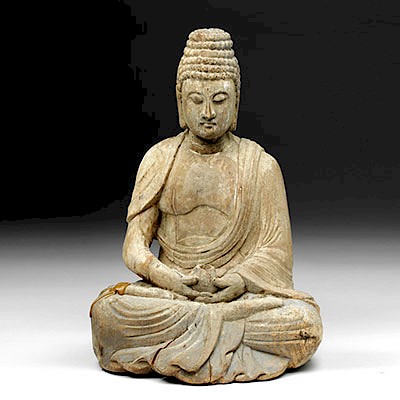Early 20th C. Papua New Guinea Wood Yam Mask
Lot 169b
About Seller
Artemis Gallery
686 S Taylor Ave, Ste 106
Louisville, CO 80027
United States
Selling antiquities, ancient and ethnographic art online since 1993, Artemis Gallery specializes in Classical Antiquities (Egyptian, Greek, Roman, Near Eastern), Asian, Pre-Columbian, African / Tribal / Oceanographic art. Our extensive inventory includes pottery, stone, metal, wood, glass and textil...Read more
Categories
Estimate:
$500 - $750
Absentee vs Live bid
Two ways to bid:
- Leave a max absentee bid and the platform will bid on your behalf up to your maximum bid during the live auction.
- Bid live during the auction and your bids will be submitted real-time to the auctioneer.
Bid Increments
| Price | Bid Increment |
|---|---|
| $0 | $25 |
| $300 | $50 |
| $1,000 | $100 |
| $2,000 | $250 |
| $5,000 | $500 |
| $10,000 | $1,000 |
| $20,000 | $2,500 |
| $50,000 | $5,000 |
| $100,000 | $10,000 |
| $200,000 | $20,000 |
About Auction
By Artemis Gallery
Jun 7, 2018
Set Reminder
2018-06-07 09:00:00
2018-06-07 09:00:00
America/New_York
Bidsquare
Bidsquare : Clearance Sale - Ancient / Ethnographic Art
https://www.bidsquare.com/auctions/artemis-gallery/clearance-sale---ancient-ethnographic-art-3264
Looking for a bargain on authentic ancient and ethnographic art? These lots are going, going, gone! Artemis Gallery info@artemisgallery.com
Looking for a bargain on authentic ancient and ethnographic art? These lots are going, going, gone! Artemis Gallery info@artemisgallery.com
- Lot Description
Oceania, Papua New Guinea, Price Alexander Mountains, Abelam People, Middle Sepik River region, ca. early 20th century CE. A hand-carved, wooden Abelam yam mask, of abstract form, with a raised, face-like projection with painted concentric half-discs around what appear to be painted eyes and, above that, a rounded panel ending in a point that is painted to resemble a huge headdress. A cane border is around the upper half and it is studded with feathers. Size: 6" W x 23.5" H (15.2 cm x 59.7 cm)
In the Sepik River Region of Papua New Guinea yams play a prominent role in the agricultural and ceremonial practices of the Abelam people. For almost half of the year men nurture their yams carefully as their personal status is judged by their ability to produce large yams. These giants can measure between 9 – 12 feet in length and they play a crucial role in the annual yam festival where they are publicly displayed. The large decorated yams are believed to be live embodiments of the ancestors and the masks play a central role in representing the spiritual beings. Power and status are directly related to the size of the yam and gender is prescribed to each based on their straightness and protrusions. Masks are used to cover long yams in a ceremony showing the men's gardening prowess. It is of utmost importance in the culture. The Abelam believe only men can grow long yams. Their success is dependent not only on hard work, but complete abstinence from contact with women during the six month growing period, and spiritual assistance from ancestors. A fine yam is named for the ancestral spirit and that spirit is brought into being by the mask and decoration.
Provenance: ex-private Tucson, Arizona, USA collection; ex-Ron Perry collection; Ron Perry collected art and artifacts for more than 40 years in New Guinea and the South Pacific. He collaborated with Carolyn Leigh to write a book entitled, "Art Dealer in the Last Unknown: Ron Perry & New Guinea Art: the early years 1964-1972" (2011)
All items legal to buy/sell under U.S. Statute covering cultural patrimony Code 2600, CHAPTER 14, and are guaranteed to be as described or your money back.
A Certificate of Authenticity will accompany all winning bids.
We ship worldwide and handle all shipping in-house for your convenience.
#129981Small surface cracks. One part of the border is detached. Very nice remaining pigment. Most feathers remain.Condition
- Shipping Info
-
All shipping is handled in-house for your convenience. Your invoice from Artemis Gallery will include shipping calculation instructions. If in doubt, please inquire BEFORE bidding for estimated shipping costs for individual items.
-
- Buyer's Premium



 EUR
EUR CAD
CAD AUD
AUD GBP
GBP MXN
MXN HKD
HKD CNY
CNY MYR
MYR SEK
SEK SGD
SGD CHF
CHF THB
THB









